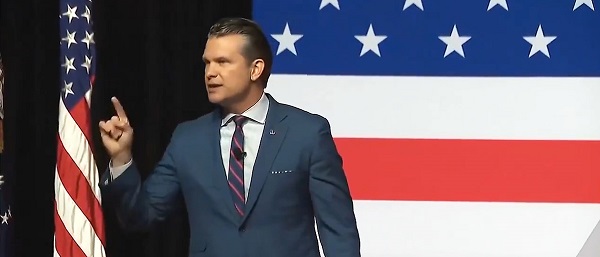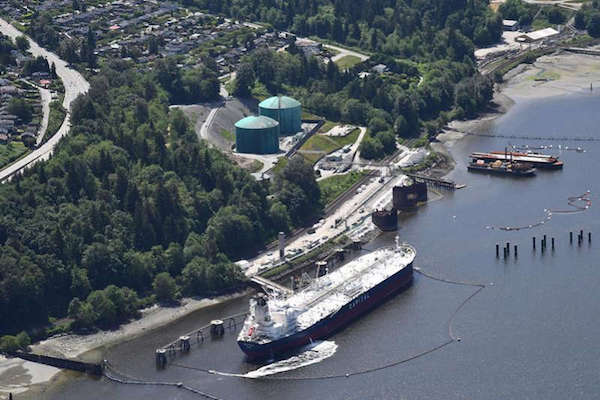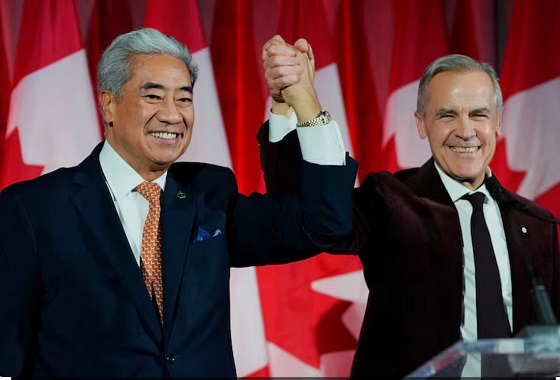Alberta
Indoor masking is back – Province taking action to reduce hospitalizations
Further actions to protect health system from COVID-19
Due to increasing COVID-19 transmission and rising hospital admissions, overwhelmingly amongst unvaccinated Albertans, temporary measures are needed to reduce transmission and prevent the health-care system from being overwhelmed.
Currently, more than 80 per cent of COVID-19 cases in hospital are unvaccinated, including 91 per cent of patients in intensive care.
“Vaccines are safe, effective, and a game-changer. This is why the current wave is different than what we’ve experienced before. While we do not need to return to the same widespread and dramatic measures we had in place earlier in the pandemic, unvaccinated Albertans in particular are still at risk and are placing a heavy load on our health-care system. This is why we are taking measured steps and introducing a new incentive program to encourage more Albertans to get the jab.”
“As I have always done, I use the best currently available evidence from Alberta and around the world to inform my recommendations to protect the health of Albertans. With hospitalization rates rising, it is important that we take additional steps to help reduce the spread of COVID-19. My ultimate goal continues to be to shift from pandemic to endemic and put more focus on the complete health of Albertans – we must learn to live with COVID. Getting vaccinated today is the best possible way for us to get there.”
New vaccine incentive program
A one-time incentive of $100 is now available for all Albertans age 18 or older who receive a first or second dose of vaccine between Sept. 3 and Oct. 14.
This incentive is intended to encourage unvaccinated Albertans to get protected as soon as possible.
After vaccination, eligible Albertans will be able to register online. Alberta Health will validate registrations against provincial immunization data. This website will be available starting on Sept. 13. If Albertans do not have access to a computer, they can contact 310-0000 for assistance, starting on Sept. 13.
Temporary measures
- The province will make masks mandatory for all indoor public spaces and workplaces starting Sept. 4 at 8 a.m. Schools are not required to implement masking but school boards will continue to set COVID-19 management policies as they deem appropriate.
- Also, as of Sept. 4 at 8 a.m., restaurants, cafés, bars, pubs, nightclubs and other licensed establishments will be required to end alcohol service at 10 p.m.
- In addition, Albertans are encouraged to limit in-person contacts. To support this, the province strongly recommends that unvaccinated Albertans limit their indoor social gatherings to close contacts of only two cohort families up to a maximum of 10 people.
- It is also recommended that employers pause their plans to have staff return to work and instead continue with work-from-home measures. If employees are working on location, employees must mask for all indoor settings, except in work stations or where two-metre physical distancing or adequate physical barriers are in place.
Additional vaccine incentives
All Albertans who have received two doses of vaccine and are aged 18 and over are eligible for the remaining $1-million draw for the Open for Summer Lottery. To register and for complete details, visit alberta.ca/lottery. The final draw closes Sept. 23.
Fully protected Albertans are also eligible to enter the Outdoor Adventure vaccine lottery. To register and for complete details, visit alberta.ca/outdoor-adventure-
Book an appointment and get vaccinated
All Albertans can book appointments via AHS online or by calling 811, or through participating pharmacies. Walk-in appointments for first doses are also available. For schedule and locations, visit ahs.ca/vaccine.
Updated modelling
Based on information available in mid-August, an updated projection of estimated COVID-19 cases and hospitalizations to the end of September was developed. Current actual data is trending toward the high end of the projections, therefore numbers may exceed the projections. Peaks in the model are only estimates, and actual peaks may be higher and later than anticipated if current growth trends continue.
This provincial modelling shows intensive care unit patients could possibly peak at around 180 in the medium scenario, although if accelerating trends continue, numbers could reach or exceed the currently projected high scenario at 290.
Other hospitalizations (non-ICU) are currently trending toward the high scenario, with a potential peak of 700 in the next several weeks. If the high scenario peaks are reached, this would mean a greater combined impact on the acute care system than in all previous waves, and if changes in transmission cause greater spread, these numbers could be exceeded.
Modelling is for the entire province. Some regions will experience different case and hospitalization statistics per capita; this will particularly be expected in those areas with lower rates of vaccinations.
Modelling is a dynamic process where there are constant comparisons against observations versus projections. When these comparisons deviate, the model assumptions are re-evaluated, which may change with new information such as outbreak events.
This modelling is now available online. A separate evidence summary has also been posted, including key assumptions and considerations, hospital impact modelling that was developed in June to inform changes announced in late July, and a reference list for further reading.
Alberta
Danielle Smith slams Skate Canada for stopping events in Alberta over ban on men in women’s sports

From LifeSiteNews
The Alberta premier has denounced Skate Canada as ‘disgraceful’ for refusing to host events in the province because of a ban on ‘transgender’ men in women’s sports.
Alberta Premier Danielle Smith has demanded an apology after Skate Canada refused to continue holding events in Alberta.
In a December 16 post on X, Smith denounced Skate Canada’s recent decision to stop holding competitions in Alberta due to a provincial law keeping gender-confused men from competing in women’s sports.
“Women and girls have the right to play competitive sports in a safe and fair environment against other biological females,” Smith declared. “This view is held by a vast majority of Albertans and Canadians. It is also common sense and common decency.”
Women and girls have the right to play competitive sports in a safe and fair environment against other biological females.
This view is held by a vast majority of Albertans and Canadians. It is also common sense and common decency.
Skate Canada‘s refusal to hold events in… pic.twitter.com/n4vbkTx6B0
— Danielle Smith (@ABDanielleSmith) December 16, 2025
“Skate Canada‘s refusal to hold events in Alberta because we choose to protect women and girls in sport is disgraceful,” she declared.
“We expect they will apologize and adjust their policies once they realize they are not only compromising the fairness and safety of their athletes, but are also offside with the international community, including the International Olympic Committee, which is moving in the same direction as Alberta,” Smith continued.
Earlier this week, Skate Canada announced their decision in a statement to CBC News, saying, “Following a careful assessment of Alberta’s Fairness and Safety in Sport Act, Skate Canada has determined that we are unable to host events in the province while maintaining our national standards for safe and inclusive sport.”
Under Alberta’s Fairness and Safety in Sport Act, passed last December, biological men who claim to be women are prevented from competing in women’s sports.
Notably, Skate Canada’s statement failed to address safety and fairness concerns for women who are forced to compete against stronger, and sometimes violent, male competitors who claim to be women.
Under their 2023 policy, Skate Canada states “skaters in domestic events sanctioned by Skate Canada who identify as trans are able to participate in the gender category in which they identify.”
While Skate Canada maintains that gender-confused men should compete against women, the International Olympic Committee is reportedly moving to ban gender-confused men from women’s Olympic sports.
The move comes after studies have repeatedly revealed what almost everyone already knew was true, namely that males have a considerable innate advantage over women in athletics.
Indeed, a recent study published in Sports Medicine found that a year of “transgender” hormone drugs results in “very modest changes” in the inherent strength advantages of men.
Additionally, male athletes competing in women’s sports are known to be violent, especially toward female athletes who oppose their dominance in women’s sports.
Last August, Albertan male powerlifter “Anne” Andres was suspended for six months after a slew of death threats and harassments against his female competitors.
In February, Andres ranted about why men should be able to compete in women’s competitions, calling for “the Ontario lifter” who opposes this, apparently referring to powerlifter April Hutchinson, to “die painfully.”
Interestingly, while Andres was suspended for six months for issuing death threats, Hutchinson was suspended for two years after publicly condemning him for stealing victories from women and then mocking his female competitors on social media. Her suspension was later reduced to a year.
Alberta
Alberta’s huge oil sands reserves dwarf U.S. shale

From the Canadian Energy Centre
By Will Gibson
Oil sands could maintain current production rates for more than 140 years
Investor interest in Canadian oil producers, primarily in the Alberta oil sands, has picked up, and not only because of expanded export capacity from the Trans Mountain pipeline.
Enverus Intelligence Research says the real draw — and a major factor behind oil sands equities outperforming U.S. peers by about 40 per cent since January 2024 — is the resource Trans Mountain helps unlock.
Alberta’s oil sands contain 167 billion barrels of reserves, nearly four times the volume in the United States.
Today’s oil sands operators hold more than twice the available high-quality resources compared to U.S. shale producers, Enverus reports.
“It’s a huge number — 167 billion barrels — when Alberta only produces about three million barrels a day right now,” said Mike Verney, executive vice-president at McDaniel & Associates, which earlier this year updated the province’s oil and gas reserves on behalf of the Alberta Energy Regulator.
Already fourth in the world, the assessment found Alberta’s oil reserves increased by seven billion barrels.
Verney said the rise in reserves despite record production is in part a result of improved processes and technology.
“Oil sands companies can produce for decades at the same economic threshold as they do today. That’s a great place to be,” said Michael Berger, a senior analyst with Enverus.
BMO Capital Markets estimates that Alberta’s oil sands reserves could maintain current production rates for more than 140 years.
The long-term picture looks different south of the border.
The U.S. Energy Information Administration projects that American production will peak before 2030 and enter a long period of decline.
Having a lasting stable source of supply is important as world oil demand is expected to remain strong for decades to come.
This is particularly true in Asia, the target market for oil exports off Canada’s West Coast.
The International Energy Agency (IEA) projects oil demand in the Asia-Pacific region will go from 35 million barrels per day in 2024 to 41 million barrels per day in 2050.
The growing appeal of Alberta oil in Asian markets shows up not only in expanded Trans Mountain shipments, but also in Canadian crude being “re-exported” from U.S. Gulf Coast terminals.
According to RBN Energy, Asian buyers – primarily in China – are now the main non-U.S. buyers from Trans Mountain, while India dominates purchases of re-exports from the U.S. Gulf Coast. .
BMO said the oil sands offers advantages both in steady supply and lower overall environmental impacts.
“Not only is the resulting stability ideally suited to backfill anticipated declines in world oil supply, but the long-term physical footprint may also be meaningfully lower given large-scale concentrated emissions, high water recycling rates and low well declines,” BMO analysts said.
-

 Daily Caller2 days ago
Daily Caller2 days agoParis Climate Deal Now Decade-Old Disaster
-

 Business2 days ago
Business2 days agoOttawa Pretends To Pivot But Keeps Spending Like Trudeau
-

 Energy2 days ago
Energy2 days agoLiberals Twisted Themselves Into Pretzels Over Their Own Pipeline MOU
-

 Censorship Industrial Complex1 day ago
Censorship Industrial Complex1 day agoHow Wikipedia Got Captured: Leftist Editors & Foreign Influence On Internet’s Biggest Source of Info
-

 Business12 hours ago
Business12 hours agoCanada Hits the Brakes on Population
-

 Crime29 mins ago
Crime29 mins agoBrown University shooter dead of apparent self-inflicted gunshot wound
-

 International1 day ago
International1 day agoHouse Rejects Bipartisan Attempt To Block Trump From Using Military Force Against Venezuela
-

 Daily Caller2 days ago
Daily Caller2 days agoHegseth Planning Huge Shakeup Of Top Military Command: REPORT









